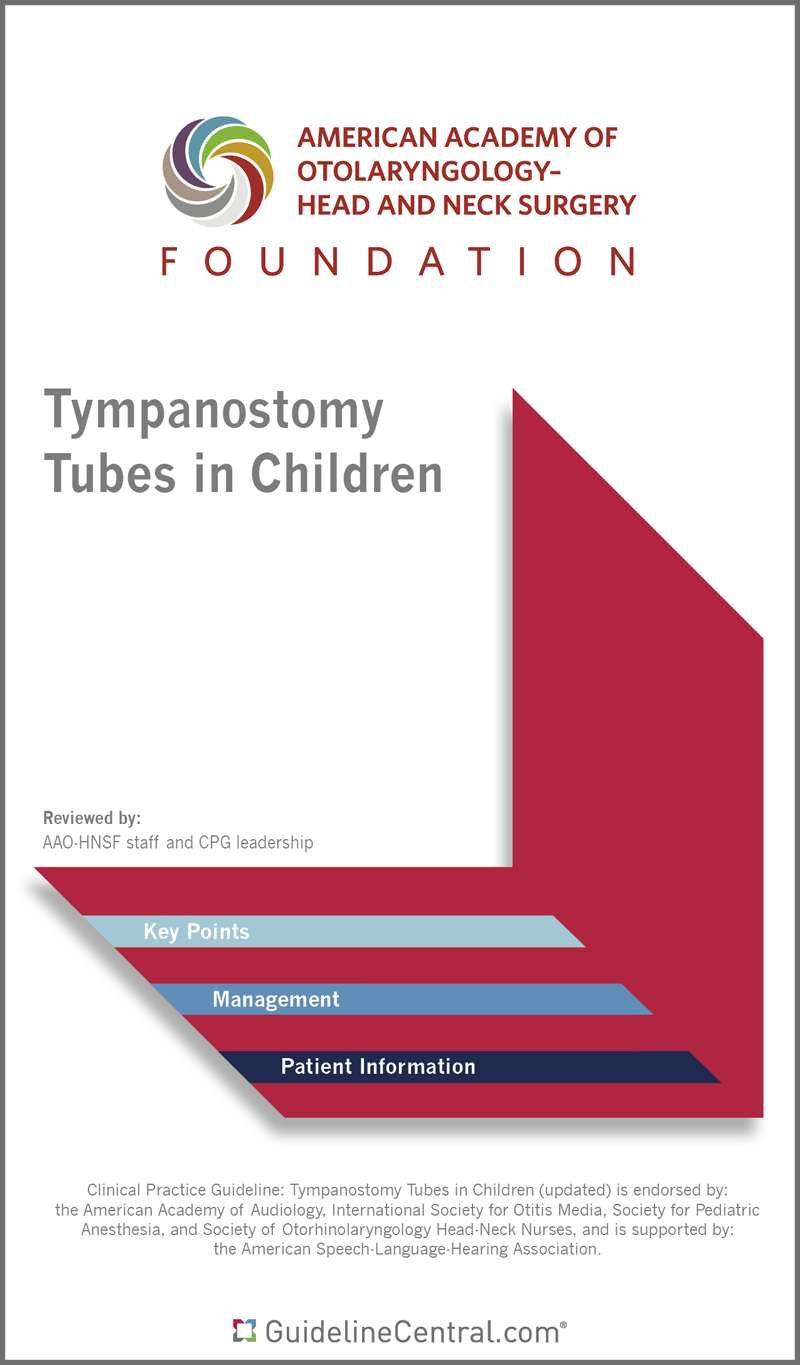Tympanostomy Tubes in Children
Published: February 2022
$15.95
Print Copy Information:
- 80# Aqueous Coating
- 4.25" x 7.25"
- Ships in 5 – 10 business days
What's Inside
Bulk and Institutional Ordering
About the Authors
Additional Information
- Key Points
- Instructions for Caregivers
- Tables
- Abbreviations and Definitions
- Risk Factors for Developmental Difficulties
- Questions for Assessing Hearing Difficulty
- Comparison of Acute Otitis Medial with and without a Tympanostomy Tube
- Figures
- Images of otitis and tubes
- Sound levels in decibels
- Abnormal tympanograms
- Management algorithm
- For purchases under 100 in quantity, we suggest placing the order directly through the website.
- We offer group/institutional licenses for multi-user accounts (discount amount varies depending on the number of users).
- We are proud to offer special discounts to medical schools, training programs, students and more.
- We offer bulk purchase discounts based on number of copies and number of titles.
Contact Us for more details
The American Academy of Otolaryngology-Head and Neck Surgery (AAO-HNS) is the world's largest organization representing specialists who treat the ear, nose, throat, and related structures of the head and neck. The Academy represents approximately 12,000 otolaryngologist-head and neck surgeons who diagnose and treat disorders of those areas. The medical disorders treated by our physicians are among the most common that afflict all Americans, young and old. They include chronic ear infection, sinusitis, snoring and sleep apnea, hearing loss, allergies and hay fever, swallowing disorders, nosebleeds, hoarseness, dizziness, and head and neck cancer.
Description
This pocket guide attempts to define principles of practice that should produce high-quality patient care. It is applicable to specialists, primary care, and providers at all levels. This pocket guide should not be considered exclusive of other methods of care reasonably directed at obtaining the same results. The ultimate judgment concerning the propriety of any course of conduct must be made by the clinician after consideration of each individual patient situation. Neither IGC, the medical associations, nor the authors endorse any product or service associated with the distributor of this clinical reference tool.
You can also find this product included in this bundle!

AAO-HNS Guidelines Bundle
Last Updated: Feb 27, 2024
$
158.95
Print
Included Guidelines:
- Acute Otitis Externa
- Adult Sinusitis
- Allergic Rhinitis
- Bell’s Palsy
- Benign Paroxysmal Positional Vertigo
- Cerumen Impaction
- Evaluation of the Neck Mass in Adults
- Hoarseness (Dysphonia)
- Immunotherapy for Inhalant Allergy
- Improving Nasal Form and Function after Rhinoplasty
- Improving Voice Outcomes After Thyroid Surgery
- Ménière’s Disease
- Nosebleed (Epistaxis)
- Opioid Prescribing for Analgesia After Common Otolaryngology Operations
- Otitis Media with Effusion
- Sudden Hearing Loss
- Tinnitus
- Tonsillectomy in Children
- Tympanostomy Tubes in Children
Related Guidelines
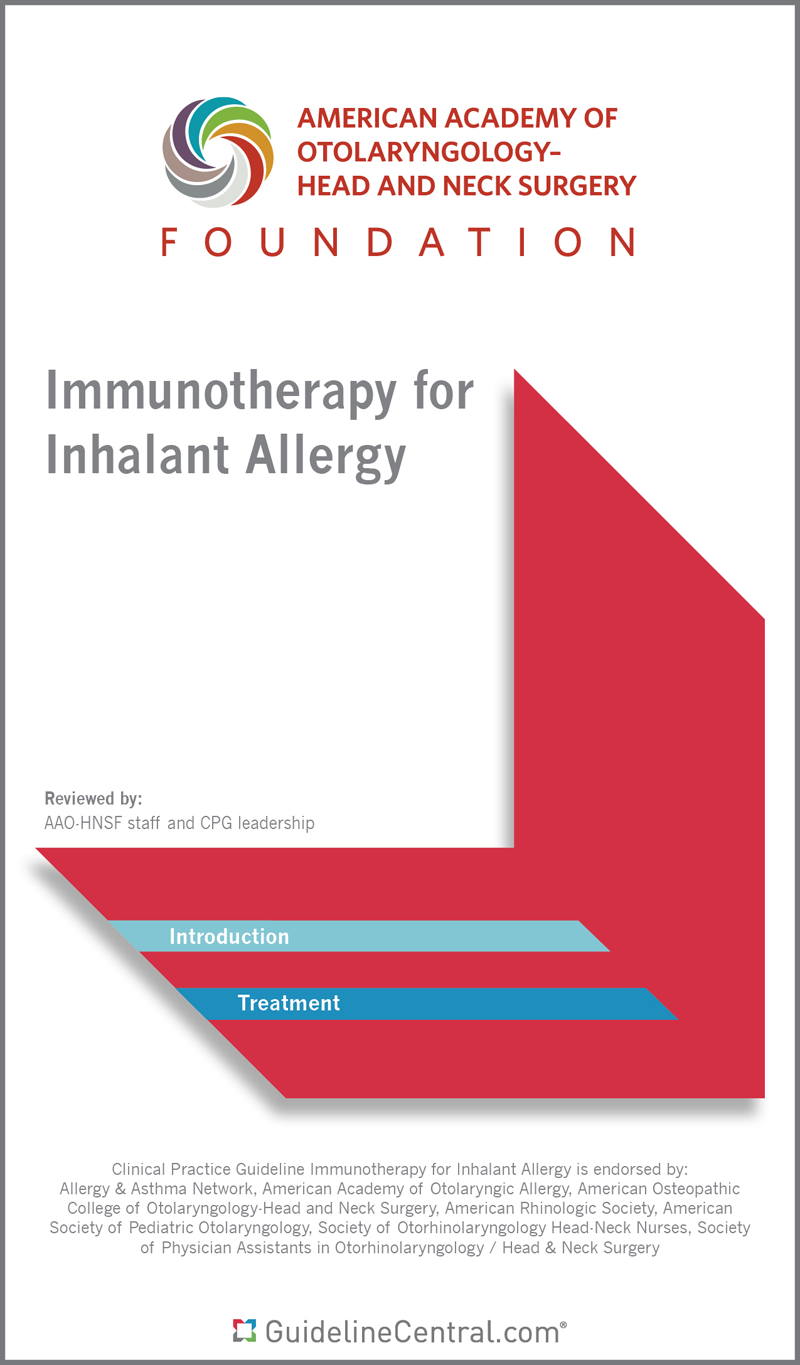
Immunotherapy for Inhalant Allergy
American Academy of Otolaryngology - Head and Neck Surgery Foundation
Last Updated: Feb 27, 2024
$
9.95
Print
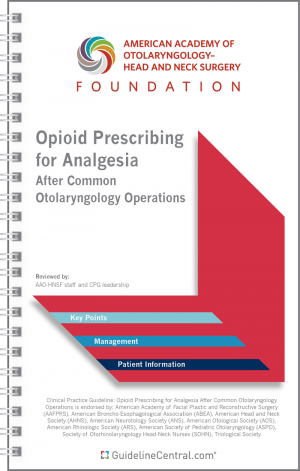
Opioid Prescribing for Analgesia After Common Otolaryngology Operations
American Academy of Otolaryngology - Head and Neck Surgery Foundation
Last Updated: Apr 1, 2021
$
9.95
Print
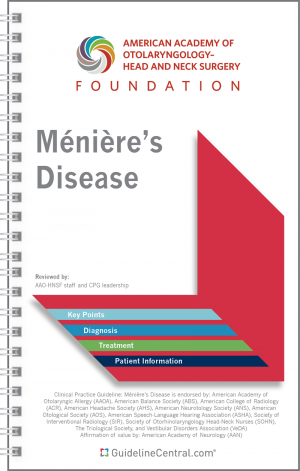
Ménière’s Disease
American Academy of Otolaryngology - Head and Neck Surgery Foundation
Last Updated: Apr 7, 2020
$
9.95
Print
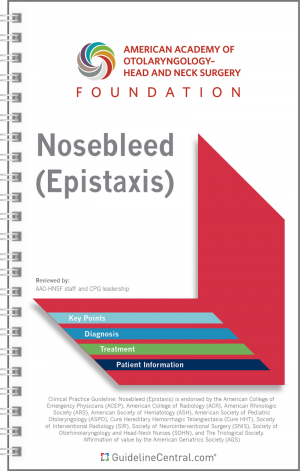
Nosebleed (Epistaxis)
American Academy of Otolaryngology - Head and Neck Surgery Foundation
Last Updated: Jan 6, 2020
$
11.95
Print
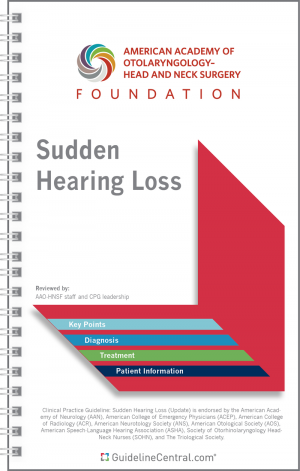
Sudden Hearing Loss
American Academy of Otolaryngology - Head and Neck Surgery Foundation
Last Updated: Aug 5, 2019
$
9.95
Print
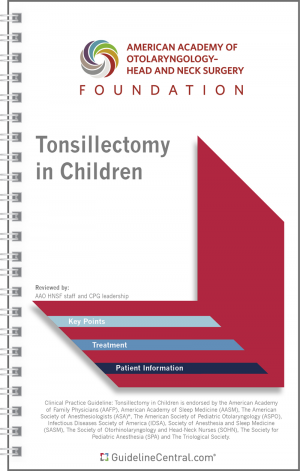
Tonsillectomy in Children
American Academy of Otolaryngology - Head and Neck Surgery Foundation
Last Updated: Feb 4, 2019
$
9.95
Print

Hoarseness (Dysphonia)
American Academy of Otolaryngology - Head and Neck Surgery Foundation
Last Updated: Feb 28, 2018
$
9.95
Print
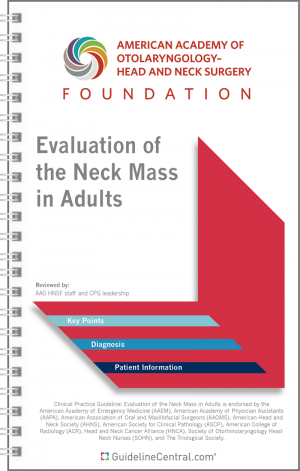
Evaluation of the Neck Mass in Adults
American Academy of Otolaryngology - Head and Neck Surgery Foundation
Last Updated: Sep 9, 2017
$
9.95
Print
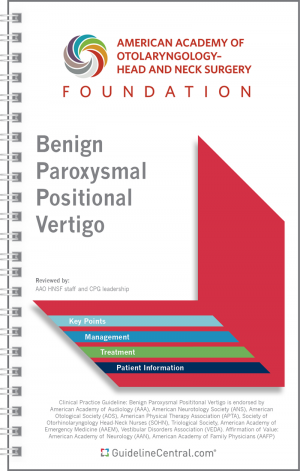
Benign Paroxysmal Positional Vertigo
American Academy of Otolaryngology - Head and Neck Surgery Foundation
Last Updated: Feb 28, 2017
$
9.95
Print
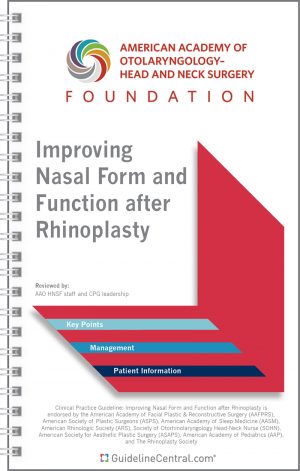
Improving Nasal Form and Function after Rhinoplasty
American Academy of Otolaryngology - Head and Neck Surgery Foundation
Last Updated: Jan 31, 2017
$
9.95
Print
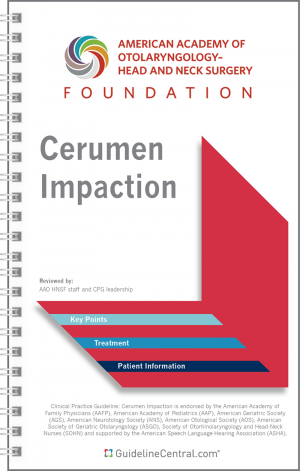
Cerumen Impaction
American Academy of Otolaryngology - Head and Neck Surgery Foundation
Last Updated: Jan 2, 2017
$
9.95
Print
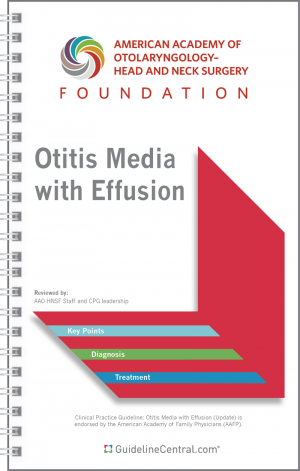
Otitis Media with Effusion
American Academy of Otolaryngology - Head and Neck Surgery Foundation
Last Updated: Jan 31, 2016
$
9.95
Print
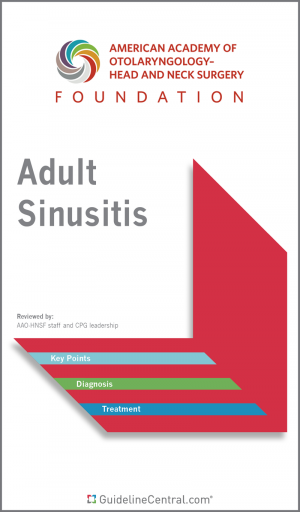
Adult Sinusitis
American Academy of Otolaryngology - Head and Neck Surgery Foundation
Last Updated: Apr 1, 2015
$
9.95
Print
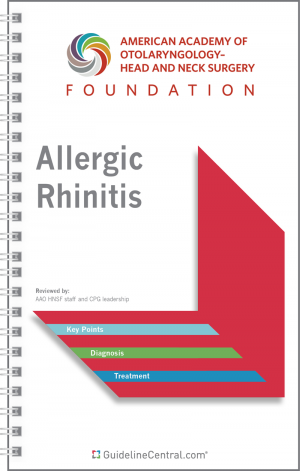
Allergic Rhinitis
American Academy of Otolaryngology - Head and Neck Surgery Foundation
Last Updated: Feb 1, 2015
$
11.95
Print
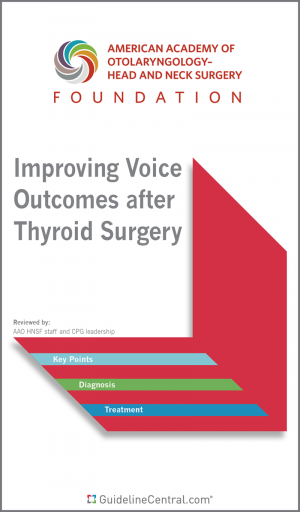
Improving Voice Outcomes After Thyroid Surgery
American Academy of Otolaryngology - Head and Neck Surgery Foundation
Last Updated: Jan 6, 2015
$
9.95
Print
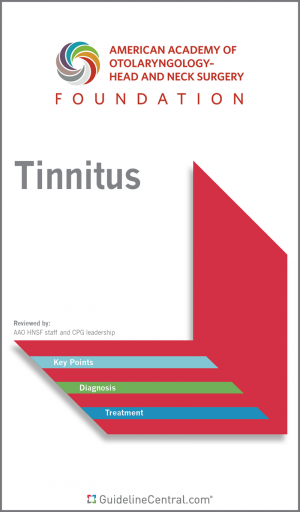
Tinnitus
American Academy of Otolaryngology - Head and Neck Surgery Foundation
Last Updated: Jan 5, 2015
$
9.95
Print

Acute Otitis Externa
American Academy of Otolaryngology - Head and Neck Surgery Foundation
Last Updated: Oct 23, 2014
$
9.95
Print

Bell’s Palsy
American Academy of Otolaryngology - Head and Neck Surgery Foundation
Last Updated: Oct 23, 2014
$
9.95
Print
